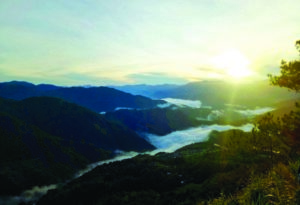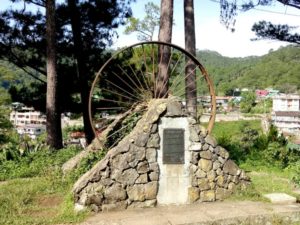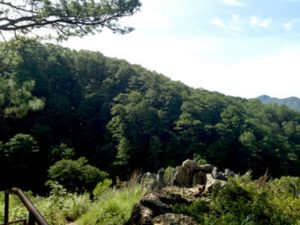I stumbled upon treasures beyond precious metals and gems. Deep within mountains of the Cordillera Administrative Region, I found treasures in the form of lush nature, vivid cultures, and rich heritage well-preserved by the different tribes were collectively known as Igorots, or people from the mountains.
True to its name Cordillera, which means chain of mountains or mountain ranges, the Cordillera Administrative Region (CAR) is located on a mountainous area within the island of Luzon and is the only landlocked region in the country.
It is composed of six provinces—Abra, Apayao, Benguet, Ifugao, Kalinga, and Mountain Province with three major cities including its regional center, the summer capital of the Philippines, Baguio City.
When you talk about CAR, what immediately comes to mind is the beauty of Baguio, its cool weather, lush pine trees and tourist attractions.
But have you looked beyond Baguio and traveled to some of CAR’s equally-beautiful provinces?
A little bit of La Trinidad, Benguet
We took an early morning hour-long flight from Cebu to Clark International Airport in Pampanga.
From there, we traveled by land for three hours to get to the Salad Bowl of the Philippines, Benguet.
The province got the title because of its huge production of upland vegetables. But Benguet is not all rural.
It also has urbanized areas such as Baguio City and its capital, La Trinidad.
CALAJO RESTAURANT – After a three-hour drive from Clark International Airport to Benguet, we stopped over for lunch at the popular Calajo Restaurant in La Trinidad. Calajo, which means “welcome” in Ibaloi (a native tribe in Benguet) dialect, is a fitting welcome to the cool Cordillera highlands.
This restaurant started as a small eatery in Pines, La Trinidad’s first grocery store.
It eventually grew to become what it is now today, a well-known restaurant serving native Benguet cuisine that both natives and tourists line up for.

Painted houses on the hillside community of Stonehill, Botiwtiw and Sadjap (STOBOSA) in Barangay Balili, La Trinidad, Benguet
STOBOSA -As part of the region’s tourism campaign Rev-Bloom (rev-up, revive, revisit, revitalize) which aims to revitalize CAR amid the negative effects and the demand of a booming tourism industry, La Trinidad has partnered with the private sector to rehabilitate and beautify its urbanized residential areas.
A result of this initiative has eventually become a tourist attraction in the area.
STOBOSA Hillside Homes Artwork is the Philippines’ first and largest community artwork composed of painted houses from three communities—Stonehill, Botiwtiw and Sadjap (STOBOSA).
What was previously considered as eyesores with dangling electric cables and unpainted houses transformed into artworks up in the mountainsides.
That place called Sagada, Mountain Province
ROCK INN & CAFÉ -We left Benguet at 4 p.m. and embarked on another five-hour journey to Sagada, Mountain Province. It was already 9 p.m. when we arrived Rock Inn & Café, a rustic bed and breakfast that served as our home in Sagada for two nights.
The moment we stepped into the open air, we were greeted with almost freezing cold since the temperature drops during the night until early dawn.
 KILTEPAN VIEWPOINT –Our second day in the Cordilleras had an early start. Since we wanted to catch the sunrise, we had to get to Kiltepan Viewpoint early.
KILTEPAN VIEWPOINT –Our second day in the Cordilleras had an early start. Since we wanted to catch the sunrise, we had to get to Kiltepan Viewpoint early.
We got there 10 minutes before 5 a.m. With the temperature dropping to 14 degrees Celsius, the steam and aroma coming from the food stalls there got us craving for piping hot soup, Arroz Caldo, Champorado and brewed coffee.
After the hot meal, we proceeded to the viewing area situated on the cliff and waited
. At 5:30 a.m. we witnessed a breathtaking view of a majestic sea of clouds right before the sun rose.
A visual treat unfolded right before our eyes as the sky was illuminated with the the rising sun’s golden hue, the mountains played hide-and-seek behind thick clouds, and the rays of sunlight highlighted the beauty of nature underneath.
 ST. MARY THE VIRGIN EPISCOPAL CHURCH – We continued our day with an itinerary full of interesting places that tell the story of Sagada — from the origins of its name to the cultural beliefs of the native tribes.
ST. MARY THE VIRGIN EPISCOPAL CHURCH – We continued our day with an itinerary full of interesting places that tell the story of Sagada — from the origins of its name to the cultural beliefs of the native tribes.
First stop was St. Mary the Virgin Episcopal Church.
This Anglican church was built under the direction of Rev. John Staunton in 1907, three years after setting up the new station of the Episcopal Church in Sagada.
With 95 percent of the population baptized into the Episcopal Church of the Philippines, Sagada is the only Philippine town that is predominantly Anglican.
 CENTENNIAL WHEEL – Displayed right outsidethe Episcopal Church, the Centennial Wheel is a commemoration of the first machine introduced to the local ethnic tribes. This wheel was part of the first sawmill in Sagada.
CENTENNIAL WHEEL – Displayed right outsidethe Episcopal Church, the Centennial Wheel is a commemoration of the first machine introduced to the local ethnic tribes. This wheel was part of the first sawmill in Sagada.
 ECHO VALLEY – It’s a long walk to get to the Hanging Coffins.
ECHO VALLEY – It’s a long walk to get to the Hanging Coffins.
On your way there, you have to pass through winding walkways of Echo Valley.
Meanwhile you get treated to a view of the lush forest and towering mountains that form the valley.
Echo Valley got its name because whenever you shout from one side of the valley, your voice echoes back to you.
But shouting is now discouraged in the area because according to our guide, it disrupts the sacredness of the burial areas nearby.
 HANGING COFFINS – It has been the tradition of the olden times to hang the coffins of their departed, usually those of the honorable elders of the Aplay tribe.
HANGING COFFINS – It has been the tradition of the olden times to hang the coffins of their departed, usually those of the honorable elders of the Aplay tribe.
They are elevated from the ground as protection from animals. It was the Americans who influenced them to bury the coffins.
Originally situated inside caves, some of the coffins have been placed onto surfaces of cliffs.
The boxes come in different sizes. In the short coffins, they arranged the body in a fetal position so that it fits in the box.
This is in contrast with the long coffins, also because of American influence.
Some coffins have a wooden chair attached. It is called a death chair.
A funeral would last for three to five days.
On the last day, they will have the body sit on the chair because they believe that it will help their ancestors identify the departed.
The hanging coffins is just another testament of the rich and colorful culture and traditions of the Igorots.
(CONTINUED NEXT SATURDAY)



